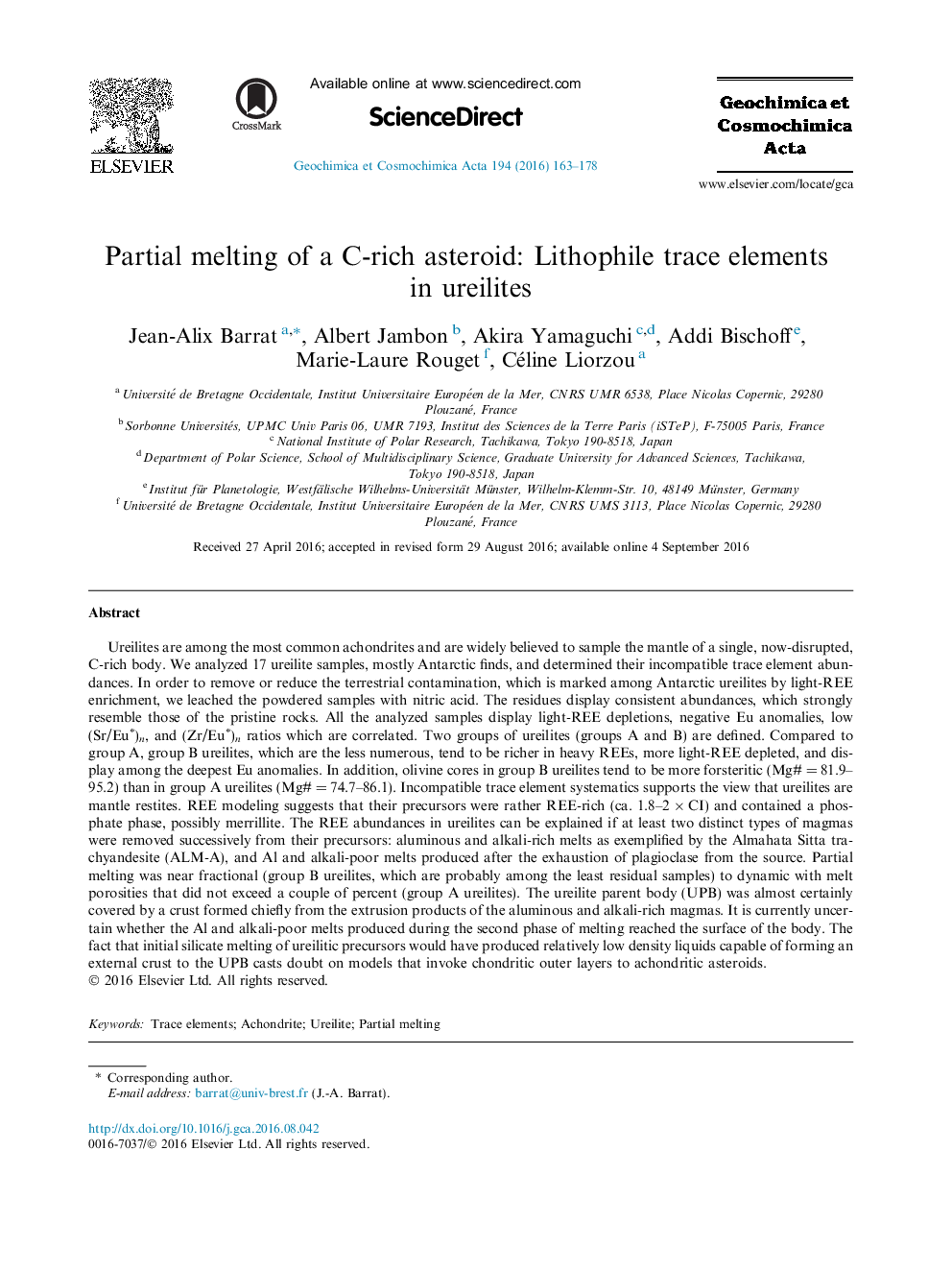| کد مقاله | کد نشریه | سال انتشار | مقاله انگلیسی | نسخه تمام متن |
|---|---|---|---|---|
| 6437158 | 1637963 | 2016 | 16 صفحه PDF | دانلود رایگان |
Ureilites are among the most common achondrites and are widely believed to sample the mantle of a single, now-disrupted, C-rich body. We analyzed 17 ureilite samples, mostly Antarctic finds, and determined their incompatible trace element abundances. In order to remove or reduce the terrestrial contamination, which is marked among Antarctic ureilites by light-REE enrichment, we leached the powdered samples with nitric acid. The residues display consistent abundances, which strongly resemble those of the pristine rocks. All the analyzed samples display light-REE depletions, negative Eu anomalies, low (Sr/Euâ)n, and (Zr/Euâ)n ratios which are correlated. Two groups of ureilites (groups A and B) are defined. Compared to group A, group B ureilites, which are the less numerous, tend to be richer in heavy REEs, more light-REE depleted, and display among the deepest Eu anomalies. In addition, olivine cores in group B ureilites tend to be more forsteritic (Mg#Â =Â 81.9-95.2) than in group A ureilites (Mg#Â =Â 74.7-86.1). Incompatible trace element systematics supports the view that ureilites are mantle restites. REE modeling suggests that their precursors were rather REE-rich (ca. 1.8-2Â ÃÂ CI) and contained a phosphate phase, possibly merrillite. The REE abundances in ureilites can be explained if at least two distinct types of magmas were removed successively from their precursors: aluminous and alkali-rich melts as exemplified by the Almahata Sitta trachyandesite (ALM-A), and Al and alkali-poor melts produced after the exhaustion of plagioclase from the source. Partial melting was near fractional (group B ureilites, which are probably among the least residual samples) to dynamic with melt porosities that did not exceed a couple of percent (group A ureilites). The ureilite parent body (UPB) was almost certainly covered by a crust formed chiefly from the extrusion products of the aluminous and alkali-rich magmas. It is currently uncertain whether the Al and alkali-poor melts produced during the second phase of melting reached the surface of the body. The fact that initial silicate melting of ureilitic precursors would have produced relatively low density liquids capable of forming an external crust to the UPB casts doubt on models that invoke chondritic outer layers to achondritic asteroids.
Journal: Geochimica et Cosmochimica Acta - Volume 194, 1 December 2016, Pages 163-178
